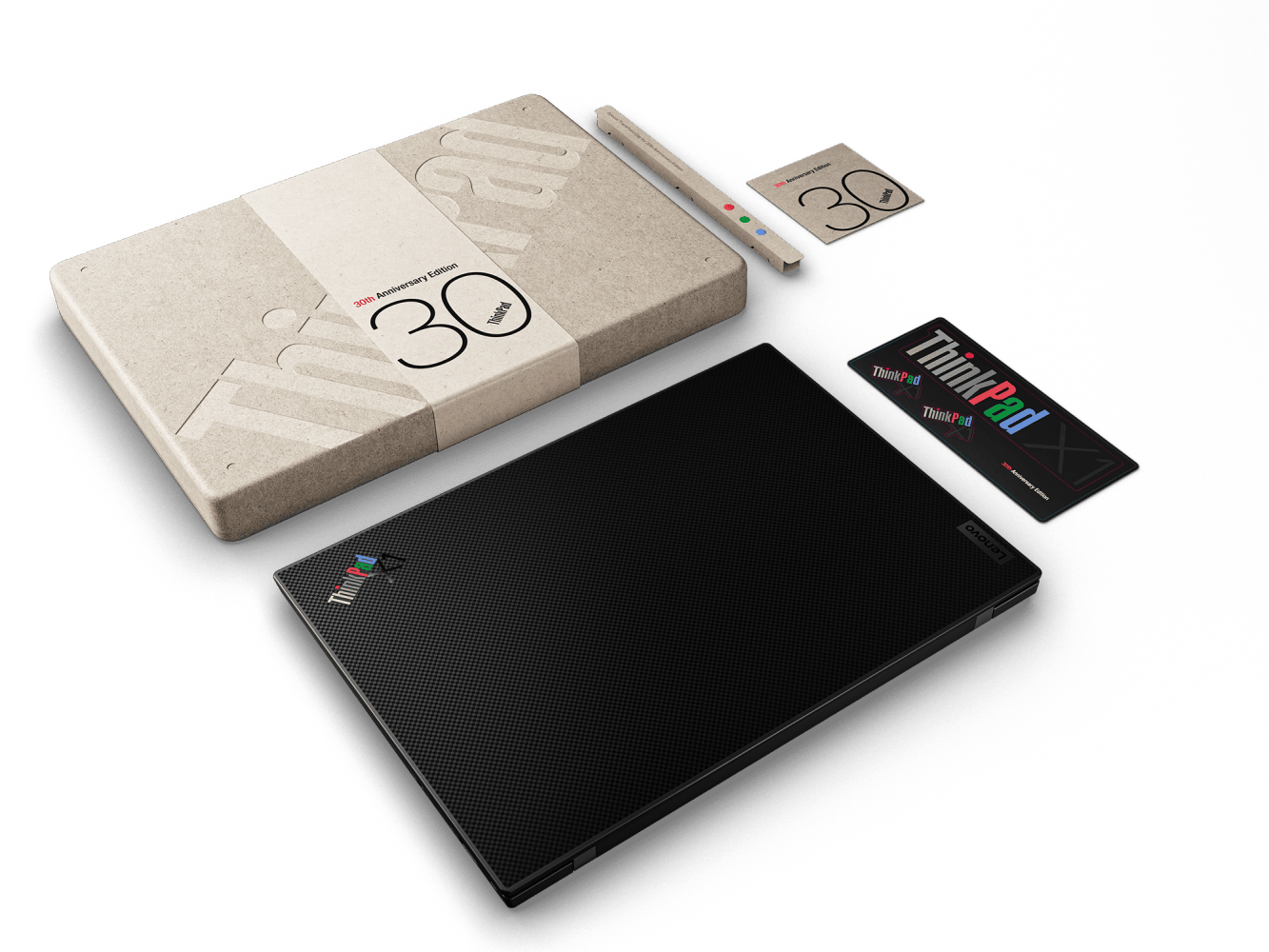Sitting in a hotel in SoHo district in New York City on a cold winter day in October 2022, I received my 30th-anniversary edition of the Lenovo ThinkPad X1 Carbon. Upon unboxing, I was immediately drawn to the thoughtful details that set this edition apart. The packaging, crafted from eco-friendly bamboo and compostable sugarcane materials, was encased in a 30th-anniversary sleeve. Nestled within was a pamphlet chronicling the ThinkPad’s journey, a commemorative anniversary sticker, and interchangeable TrackPoint heads in vibrant RGB red, green, and blue colors. The lid branding was the first thing that caught my eye as I unveiled the laptop. The tri-colored logo is a delightful throwback to the old branding, reinforcing the nostalgic theme of this special edition.
My journey with the ThinkPad brand began in 1993, when I first laid hands on an IBM model, though I can’t recall if it was the 700 or 700c. The day the screen shattered was a heart-wrenching one for me. However, the efficient tech support at IBM’s Exchange Square in Hong Kong swiftly replaced the screen, much to my relief. In 1994, I switched to 701, also known as the Butterfly.
Fast forward to 2005, Lenovo took over IBM’s PC division, continuing the legacy of innovation that the ThinkPad line was known for. Among their offerings, the Lenovo ThinkPad X1 Carbon stands out as a highly sought-after business laptop, earning critical acclaim for its slim design, robust performance, and impressive battery life.
In honor of the ThinkPad’s 30th anniversary, Lenovo introduced a special edition of the X1 Carbon. I am fortunate to have spent the last twelve months with this 30th-anniversary edition of the ThinkPad X1 Carbon.
The Lenovo ThinkPad X1 Carbon 30th Anniversary Edition is a remarkable milestone, celebrating three decades of the esteemed ThinkPad series. With a mere 5,000 units in circulation, this limited-edition model pays homage to the ThinkPad’s illustrious past and its progressive evolution.
Retaining the body design of the Gen 10, this compact laptop is a traveler’s dream with its 14-inch frame. Its slender 0.6-inch profile and feather-light weight of 2.4 pounds make it my constant companion during my relentless travels. Indeed, the laptop’s negligible weight in my backpack is such that it allows me the added convenience of carrying a ThinkVision M14. The two together have traveled with me three times around the world in the last twelve months. The presence of 2 Thunderbolt 4 ports and 2 USB 3.2 Gen 1 Type-A ports proves incredibly handy. They allow for effortless connection of an external webcam or a light, eliminating the need for additional dongles.
The keyboard boasts a unique anniversary design, with the TrackPoint cap mirroring the classic ThinkPad colors. These nostalgic colors pay tribute to the original ThinkPads and serve as a recurring theme on this device. I’ve carefully preserved these interchangeable heads in a Ziploc pouch in my backpack.
The Lenovo ThinkPad X1 Carbon 30th Anniversary Edition version I’ve been using is a powerhouse. It’s equipped with an Intel Core i7-1270P processor, which ensures robust performance for all my demanding tasks. Accompanied by 32GB of LPDDR5 memory, it allows for seamless multitasking.
The laptop also features a 1TB PCIe Gen4 SSD, providing me with ample storage space and facilitating quick boot times and rapid data access. This feature is a boon for someone like me who accumulates a lot of information.
The Lenovo ThinkPad X1 Carbon 30th Anniversary Edition display is indeed a highlight. Its 14-inch screen, with a 3840 x 2400 pixels resolution, delivers crisp visuals and vibrant colors. This enhances every task, whether working on spreadsheets, watching videos, or participating in video calls.
The Lenovo ThinkPad X1 Carbon Gen 10 30th Anniversary Edition is more than just a laptop; it’s a testament to thirty years of innovation and quality. Its top-tier specifications, sleek design, and limited availability embody the ThinkPad brand's legacy. This powerful and stylish laptop is a device that celebrates the ThinkPad’s journey, making it an excellent addition to any workspace. My workspace.















